A good night’s sleep starts with a good bed. Use our tips to find the best one for your little one.
It’s an emotional moment when your child is ready for a ‘big bed’ or to personalise his or her own sleeping space. Our guide will help you choose a bed that will appeal to your child’s tastes and needs as well as your budget.

Handmade to order, the Barney and Boo day bed by Little Lucy Willow comes with the option of underbed storage. Priced from £415.
Ready for a big bed
When’s the right time to move your child from a cot to a bed? The answer to this is different for every family. Some children are ready to move out of their cot at 18 months old. For others, it could be two years.
“As a parent, you will know when the time is right,” says Louise Thomas, director of Little Lucy Willow. “Your child could simply have grown too big to sleep comfortably in their cot. Or they might be attempting to climb out, in which case it’s definitely time to think about moving them to bed.”
Try to make the transition a positive experience. Talk about it a week or so beforehand to make sure your child understands what’s happening. Help them feel secure, too: “Let them choose some new bedding perhaps, and, if they seem upset about the change, let them sleep with their old cot blanket for comfort,” suggests Louise.
To ease into this new phase, aim to put the new bed in the same place as the cot and keep bedtime routines exactly the same. “Don’t be disheartened if it doesn’t go according to plan, says Louise. “It’s a huge step for your child to take and some will adapt much better than others. Just remember to heap on the praise when they sleep in their new ‘big bed’.”

The Buttons bed comes in a stylish stone finish and features accent buttons on the head- and footboards to give it a playful look. Priced £359 at Barker and Stonehouse.
The next step
If you’re concerned that your child is struggling with leaving his or her cot, Melanie Allan, commercial product manager at Silver Cross, recommends a toddler bed. “It’s smaller and lower than a normal single bed, making the transition less daunting,” she says. If your child needs to get up in the night, the lower height will also keep them safe from any bumps.
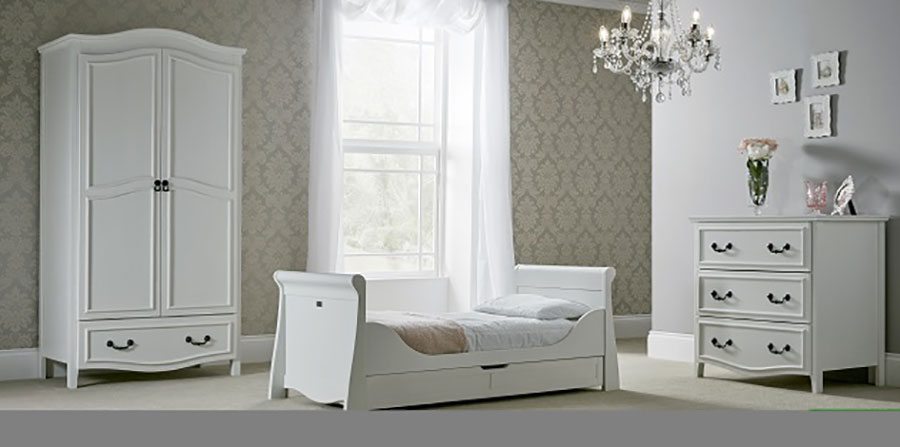
Priced £500 at Silver Cross, the stylish Windsor cot grows with your child and transforms into a toddler bed. Features include a spacious drawer for under bed-storage.
Go full size
The downside to a toddler bed is that your child will outgrow it pretty quickly. If you’re not keen to splash out on a bed with a short shelf life, it’s fine to go straight to a full size bed. Add a bed guard (look at Mothercare or Argos) for peace of mind until your child gets used to sleeping without rails.
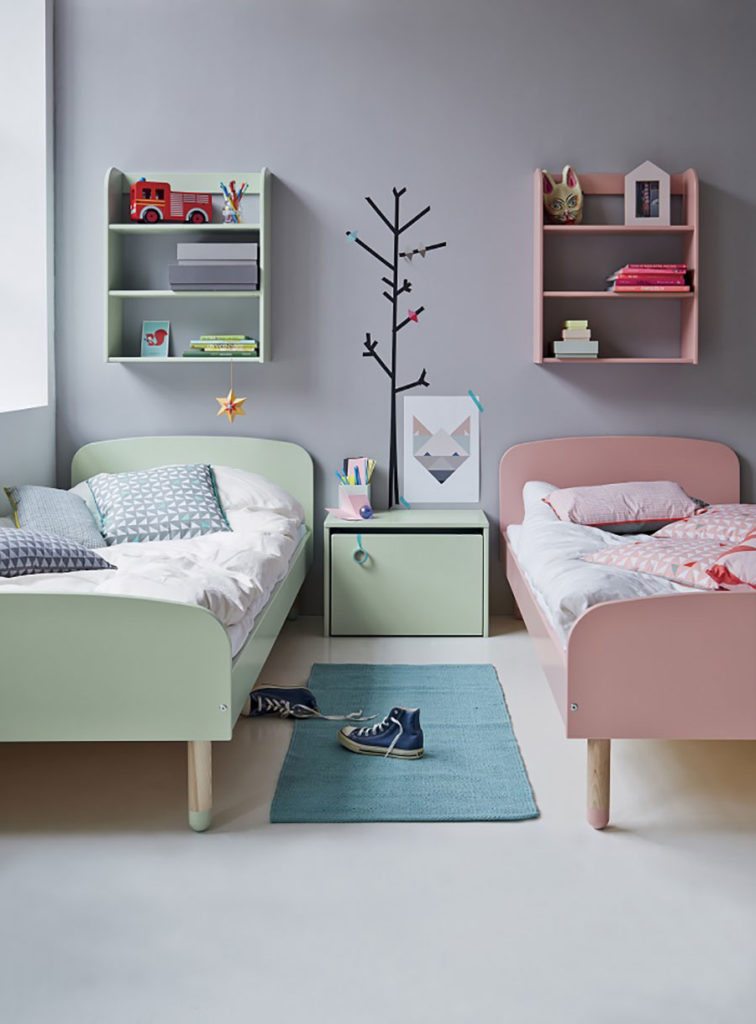
Perfect for young children and stylish teenagers, the Flexa bed by Nubie, £189, is available in pink, mint, yellow and white.
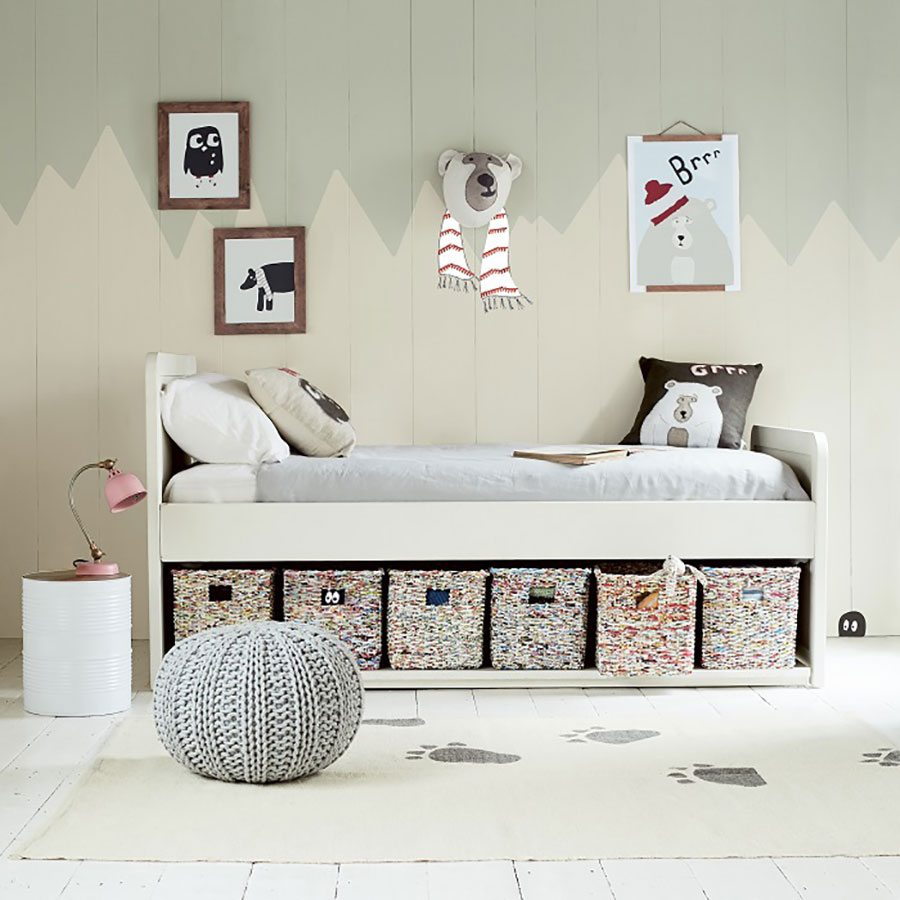
The Mazeballs bed by Loaf (£625) is perfect for squirrelling things away in its six baskets handwoven from recycled magazines.
Bag a bunk
A bunk bed is a great way for siblings to share a bedroom, particularly when space is tight. Many bunks split into separate single beds so you don’t have to invest in new ones when your kids get older.
“EU guidelines state that bunk beds should only be used by children aged six years or over,” explains Louise. “However, as a parent you will know if your child is mature enough to sleep on the top bunk and whether they are able to use the ladder safely and sensibly.”
Shop for a bunk bed with a solid, continuous side rail to offer extra safety and security for young children.

Priced from £1,850, the IO Bunk Pod by IOKids divides to create two single beds. Buy a converter kit from £275 and reassemble the lower bunk into a desk.
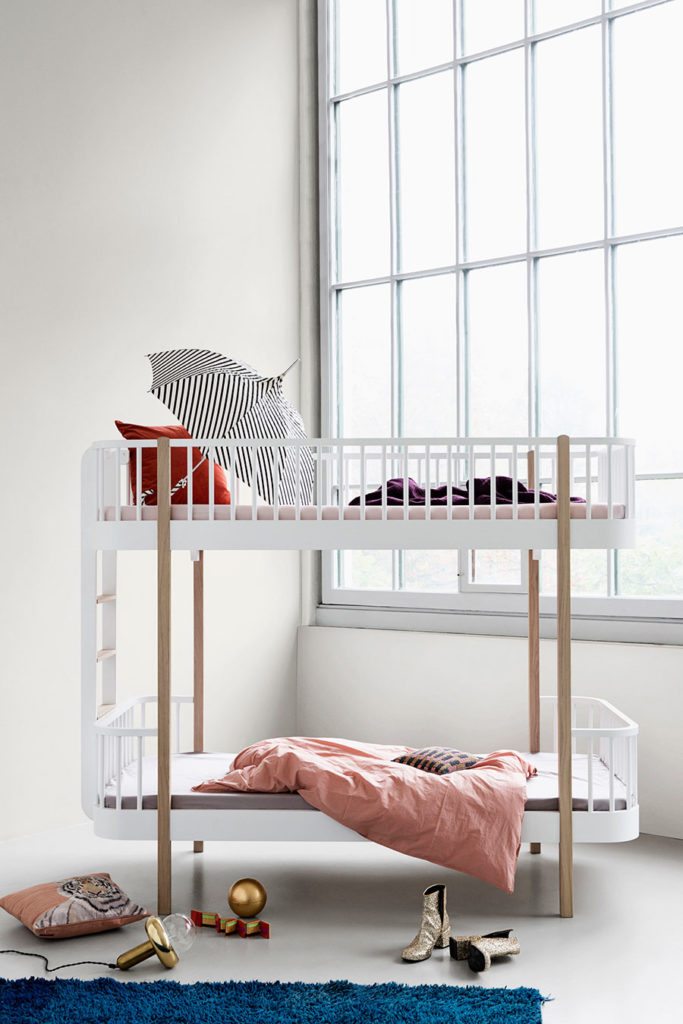
The Scandi bunk bed by Oliver Furniture (£1,635) comes with optional drawers and side rails. The ladder can either be positioned at the side or on the front.
Combine storage and sleeping
You’ll need to create space as your child gets older and acquires more possessions. Increase storage without sacrificing square inches with a cabin bed (also known as a mid sleeper), which will house drawers, a cupboard and sometimes even a pull-out desk in its base.
Cabin beds aren’t recommended for children from the age of four, and you’ll know best if your child will struggle with the ladder.
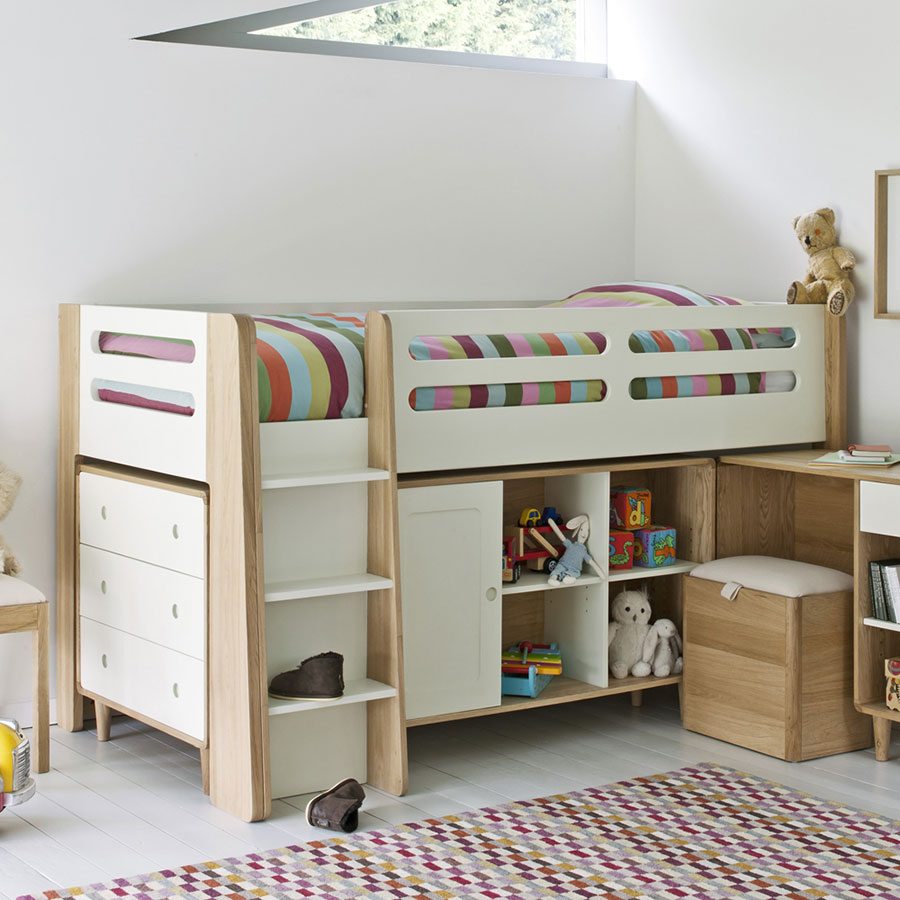
The Archie cabin bed from Feather & Black is made from oak with a painted finish. Priced £799, it can be extended with modular storage options.
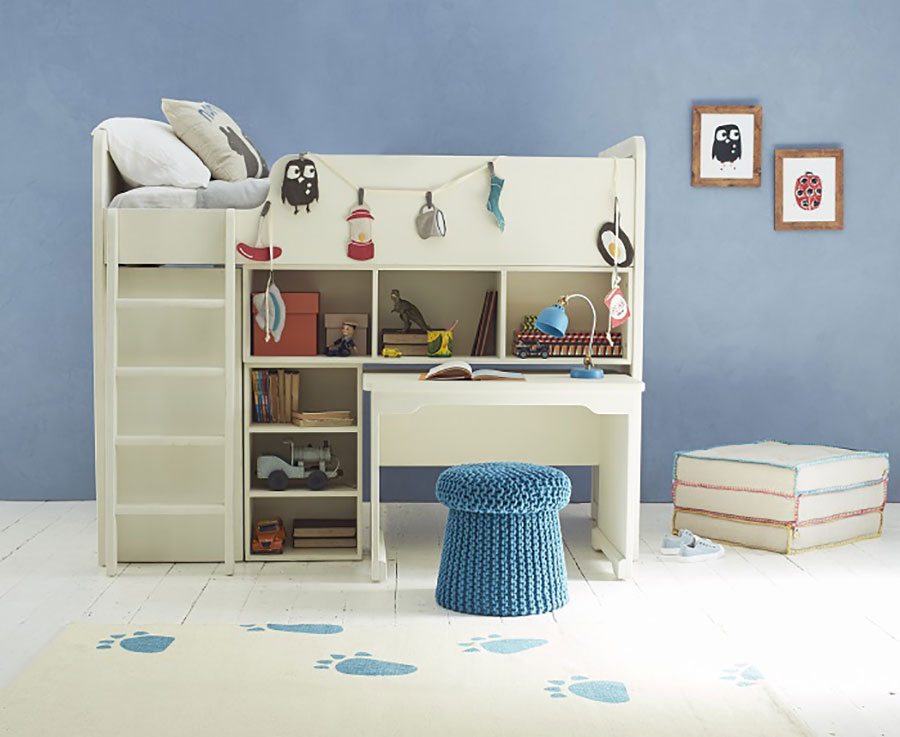
Highlights of the Happy Camper cabin bed from Loaf include a wardrobe at one end, a clever pull-out desk and plenty of storage. Priced £1,295.
All hail the high sleeper
High sleepers are a cross between a bunk and a cabin bed. They’re a similar height to a bunk bed and are accessed by a ladder, but the taller space beneath the mattress can feature a desk, chill-out space or storage – so you’ll save on buying these items. High sleepers are not recommended for children under six.

The Camelot Soft bed from Go Modern is available in two widths and priced from £1,650. The Peggy ladder can be placed at the front (shown) or on the side of the bed.
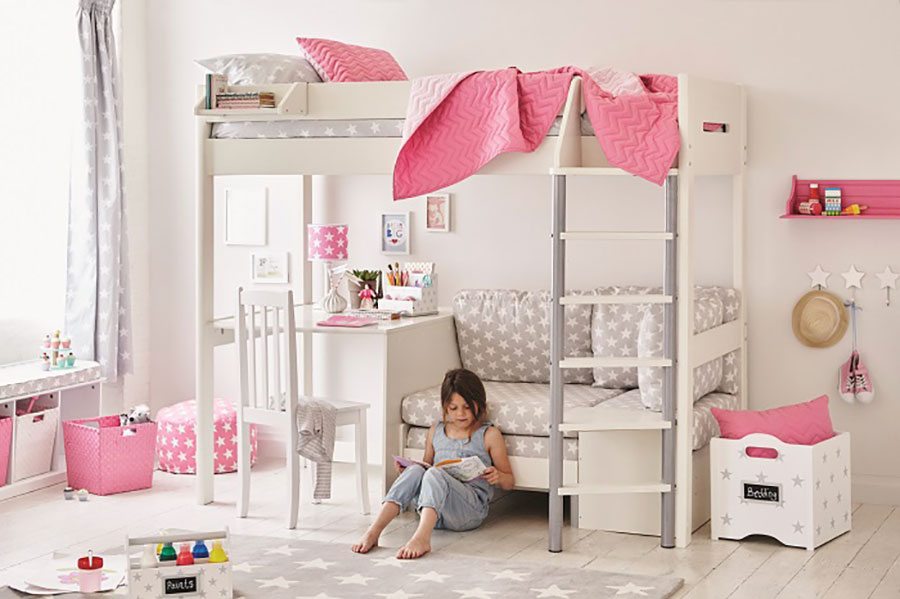
The Merlin high sleeper from the Great Little Trading Company (£1,275) includes a desk, sofa bed, a clip-on bedside table and sofa-bed cushions.
Twice as nice
Find room for overnight guests with a trundle bed (also known as a truckle bed). A smaller bed on casters rolls out from under a standard-height one: simply add bedding and the sleepover can start!

Available in a choice of 20 colours, the Cometra trundle bed is made to order in Spain in beech wood and MDF. Order yours at Cuckooland for £1,990.
The right mattress
When buying your child’s mattress, always choose quality over price. “We spend an average of a third of our lives in bed, so this is possibly the most important piece of furniture we can buy — particularly for a growing child who needs sufficient sleep and support for development purposes,” says Claire Hornby, creative manager at Barker and Stonehouse..
It’s best to choose a spring-based mattress for your child rather than a cheaper foam mattress, adds Melanie Allan of Silver Cross. “The springs will provide support and aid in air circulation,” she explains.
Cabin beds, high sleepers and bunks often come with a recommended mattress depth, so always check this before buying.
For further hints and tips, check out our mattress buying guide

Use the space underneath the Paddington mid sleeper from the Great Little Trading Company for play, storage or a sleeping spot for a young overnight guest. Priced £450.
Blow the budget
Cast practicality aside and indulge in a couple of show-stopping designs from Portuguese manufacturer Circu. You may not have the space (or the budget) for beds like these, but it’s always good to dream!

Featuring a bed, storage compartments, a TV, a desk, a mini bar and a sofa, the Bun Van bed by Circu has it all. Contact Circu for prices.

Up, up and away: turn her dreams into a reality with the Fantasy Air Balloon bed by Circu. Priced on application.